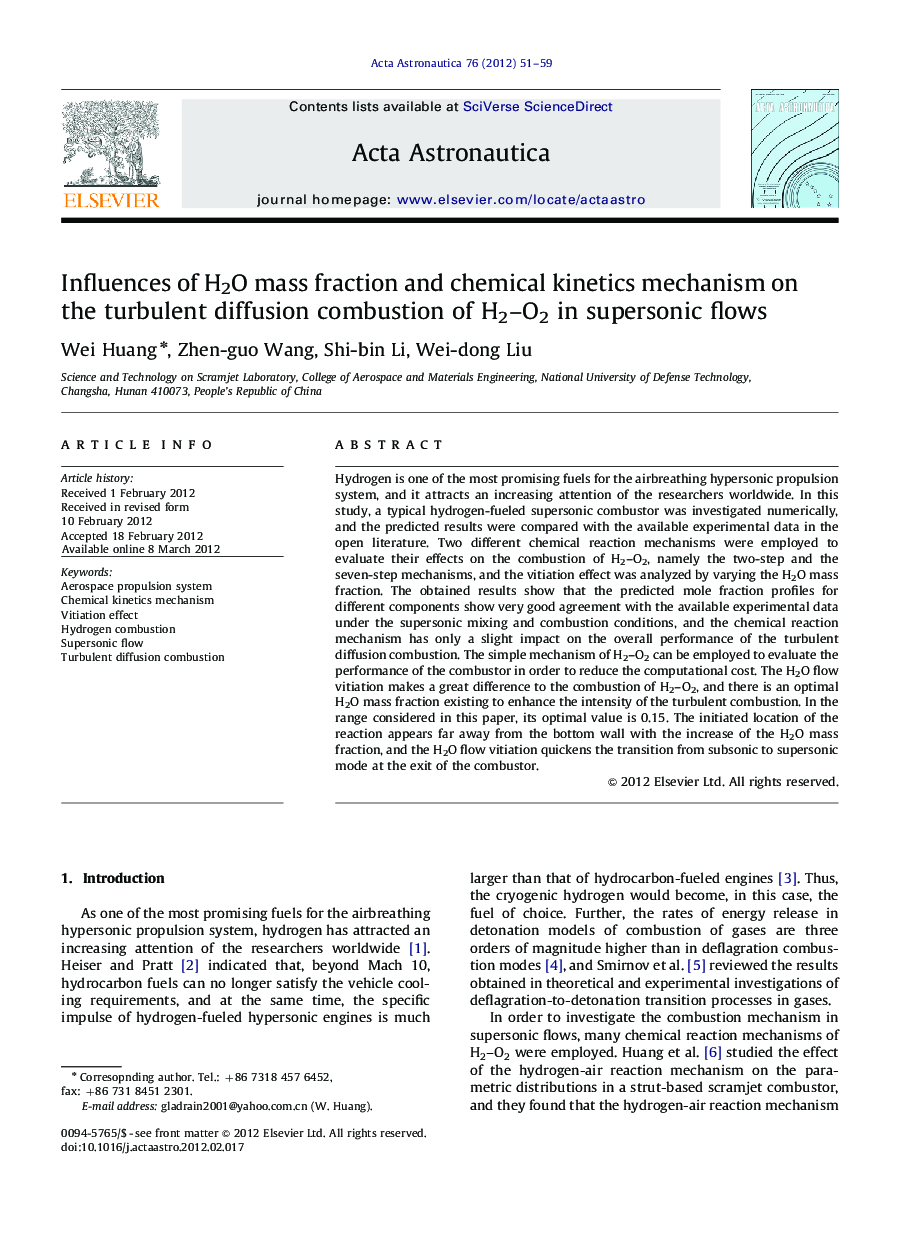| کد مقاله | کد نشریه | سال انتشار | مقاله انگلیسی | نسخه تمام متن |
|---|---|---|---|---|
| 1715326 | 1519972 | 2012 | 9 صفحه PDF | دانلود رایگان |

Hydrogen is one of the most promising fuels for the airbreathing hypersonic propulsion system, and it attracts an increasing attention of the researchers worldwide. In this study, a typical hydrogen-fueled supersonic combustor was investigated numerically, and the predicted results were compared with the available experimental data in the open literature. Two different chemical reaction mechanisms were employed to evaluate their effects on the combustion of H2–O2, namely the two-step and the seven-step mechanisms, and the vitiation effect was analyzed by varying the H2O mass fraction. The obtained results show that the predicted mole fraction profiles for different components show very good agreement with the available experimental data under the supersonic mixing and combustion conditions, and the chemical reaction mechanism has only a slight impact on the overall performance of the turbulent diffusion combustion. The simple mechanism of H2–O2 can be employed to evaluate the performance of the combustor in order to reduce the computational cost. The H2O flow vitiation makes a great difference to the combustion of H2–O2, and there is an optimal H2O mass fraction existing to enhance the intensity of the turbulent combustion. In the range considered in this paper, its optimal value is 0.15. The initiated location of the reaction appears far away from the bottom wall with the increase of the H2O mass fraction, and the H2O flow vitiation quickens the transition from subsonic to supersonic mode at the exit of the combustor.
► A typical planar combustion problem has been investigated numerically.
► The two- and seven-step chemical reaction mechanisms were employed.
► An optimal H2O mass fraction exists for the turbulent diffusion combustion.
► The H2O flow vitiation quickens the transition from subsonic to supersonic mode.
Journal: Acta Astronautica - Volume 76, July–August 2012, Pages 51–59